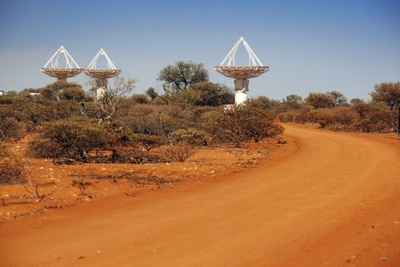Funding for world’s largest radio telescope
Australian organisations have won almost $19 million in funding to help design the world’s largest radio telescope.
The Australian Government has made almost $19 million available to Australian organisations to help design the groundbreaking international Square Kilometre Array (SKA) project.
Co-hosted in Australia and South Africa, the SKA will be the world’s largest radio telescope. It is being funded by countries in Europe, Asia, Africa and the Americas as well as Australia and New Zealand.
“This is a gigantic international science project that will change the way astronomy is done worldwide and it will be co-hosted here in Australia,” Minister for Science and Research Senator Don Farrell said.
“These grants will help Australian organisations to win the opportunity to work with leading international players on the design of the SKA and, by doing so, demonstrate our world-class research and development capabilities.”
The grants are conditional upon the recipients being selected by the international SKA Organisation to undertake SKA work packages, worth around $114 million. An announcement of the successful tenderers will be made later this year.

By awarding these grants, the government has secured more than $17.5 million in co-investment from the successful organisations.
Importantly, the funding will go beyond the recipients and support collaborative activity with other Australian companies - activity that will engage a breadth of industry from manufacturing to renewable energy.
The SKA will be a revolutionary new radio telescope built on two sites in the Southern Hemisphere - Australia and southern Africa.
Different components of the telescope will be situated in different countries. Australia will host both an innovative survey telescope utilising CSIRO’s phased array feed receiver technology and a low frequency array that will be able to image the first stars and galaxies that formed after the Big Bang.
Construction of the first phase of the SKA will begin in 2016, with work on a second phase planned to begin in 2020.
The site
The 126-square-kilometre Murchison Radio-astronomy Observatory (MRO) in Western Australia’s Mid West region will be Australia’s core site for the SKA. Extreme radio-quiet due to low population density makes the MRO the ideal site for radio astronomy.
CSIRO’s 36-dish Australian SKA Pathfinder (ASKAP) telescope is currently being completed at the MRO and will be operational in 2013. A powerful telescope in its own right, ASKAP will also help drive technology for the SKA, such as the development of phased array feeds or ‘radio cameras’. When complete, ASKAP will be the world’s foremost survey radio telescope.
The Murchison Widefield Array (MWA) is an Australian, US, New Zealand and Indian collaboration at the MRO to develop technology for the SKA low frequency array. Comprising 2048 antennas in 128 clusters, the telescope will be operational by 2013.
Two phases
SKA phase 1 will see a build-out of ASKAP to form a 96-dish survey telescope. This high-tech instrument will utilise phased array feed receiver technology to survey the sky in a fraction of the time of existing telescopes.
With fast survey times, this telescope will enable scientists to rapidly investigate many millions of objects in the universe, map large structures and monitor the sky for rapidly changing, transient radio objects.
Roughly 80% of the SKA phase 1 dishes will be within five kilometres of the centre of the array, with the other 20% extending outwards in spiral arms.
Also in SKA phase 1, thousands of low frequency antennas will inhabit the Australia and New Zealand SKA core site.
This low frequency telescope will investigate the early universe’s ‘dark ages’ shortly after the Big Bang to observe the re-ionisation of hydrogen gas and its formation into the first stars and galaxies. Just like the 96-dish survey telescope, this low frequency array will have a dense core of antennas and extend outwards along spiral arms.
In SKA Phase 2, the low frequency array will be extended with many thousands more antennas spread across Australia, and possibly into New Zealand. The increased collecting area will make this array more sensitive, while the great distance between the two furthest antennas will provide greater image resolution.
More detail on the recipients and the work packages is available on the SKA website.
Maher Terminals enhancing operations with private wireless
Maher Terminals chose the Nokia Edge platform because it needed a secure, reliable,...
European Space Agency launches deep space antenna in WA
The ESA is expanding its capability to communicate with scientific, exploration and space safety...
Powering the future of mining with a private 5G network
Nokia and Boldyn Networks have deployed a private 5G network at the Callio FutureMINE site in...





